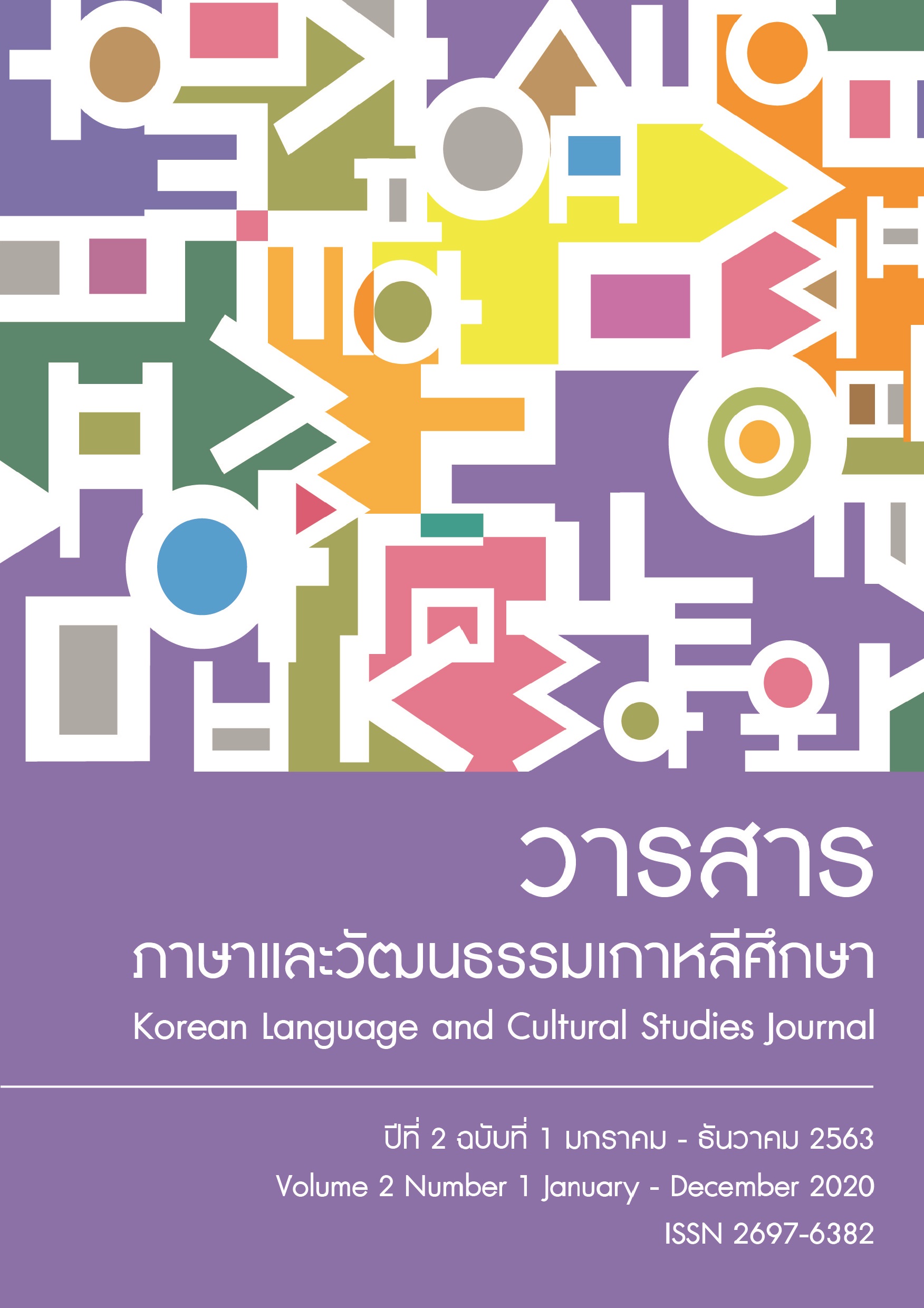A Study on the Teaching Method for Online Korean Courses through Blended Learning
Main Article Content
Abstract
This research aims to present blended learning as a way for teachers and learners to effectively proceed Korean class among the rapidly changed educational environment in the post-COVID-19 period.
Blended learning is commonly defined as a mixture of online and offline learning, but this research approached the term more comprehensively. Namely, Blended learning is utilized in compliance with the following definition: ‘Applying right learning-related technology to adjust to an individual’s learning style at the right time and focusing on achieving the learning objective’. It is a teaching method for online Korean courses based on the mixture of prerequisite flip learning, live online classes, and mobile learning.
This class consists of three phases, which are ‘stage before the class (prerequisite learning) – stage of the class – stage after the class’. ‘Stage before the class’ is individual learning by learners watching a video that the teachers provide, and the content is composed of presentation -check -preparation for stage of the class. ‘Stage of the class’ is progressed in live online class, and is composed of check of prerequisite learning - provision of assignment- activities- presentation- conclusion and guidance.
‘Stage after the class’ is composed of supplement/in-depth learning.
Article Details
References
김윤영,정현미 (2017) 수업기본원리를 적용한 플립드 러닝의 설계 및 효과, 교육공학연구 35-2호,
한국교육공학회. 295-326쪽.
김재열,김성조 (2017) 한국어 교육에서 의사소통 활성화를 위한 플립드러닝 수업 방안,
외국어로서의 한국어교육 47집, 연세대학교 언어연구교육원 한국어학당, 109-142쪽.
도재우 (2020) 면대면 수업의 온라인 수업 전환과정에서 발생하는 설계 장애물에 대한 탐색,
교육문화연구 제26권 제2호, 153쪽-173쪽,
서진숙,장미라 (2016) 온라인 강의를 활용한 해외 대학의 블렌디드 러닝 사례 연구, 이중언어학 제65호,
이중언어학회, 223쪽-256쪽.
서진숙,방성원 (2017) 화상교육을 활용한 한국어 튜터링 사례 연구, 이중언어학 제74호, 이중언어학회,
쪽-237쪽.
유수연 (2020) 효과적인 블렌디드 러닝을 위한 교사의 자질, 독일언어문학 제87집, 91쪽-110쪽.
이정희,이수미,류선숙 (2020) 국외 한국어 학습자를 위한 블렌디드 러닝 교육 과정 개발 기초 연구,
어문연구, 제48권 제1호, 163쪽-184쪽.
장미라 (2016) 블렌디드 러닝에 대한 한국어 교사의 관심 단계 연구, 한국어교육 제27권 3호,
국제한국어교육학회, 289쪽-321쪽.
조진희,지서원,찬와이밍 (2018) 블렌디드 러닝을 통한 외국어대학에서의 한국어 교육:플립 러닝을 적용한
NUS 한국어 수업 운영 중심으로, 국제한국어교육학회 학술대회논문집, 국제한국어교육학회,
쪽-989쪽.
한상미,김제열 외(2012) 온라인 한국어 교육과정 개발을 위한 기초 연구, 외국어로서의 한국어교육, 37집,
연세대학교 언어연구교육원 한국어 학당, 411쪽-448쪽.
한상미,김종인 (2013) 모바일러닝에 관한 한국어 학습자 의식 조사 연구, 외국어로서의 한국어교육, 39집,
연세대학교 언어연구교육원 한국어 학당, 407쪽-445쪽.
한종임,강한나 (2018) 블렌디드 러닝 기반 사전 학습 활동이 한국 대학교 영어학습자의 말하기에
미치는 영향, Multimedia-Assisted Language Learning 21권 3호, 한국멀티미디어언어교육학회,
쪽-205쪽
한혜민,김선아 (2016) 해외 한국어 학습자를 위한 플립드 러닝 수업 개발과 활용 사례,
외국어로서의 한국어교육 45집, 연세대학교 언어연구교육원 한국어학당, 391쪽-418쪽.
한혜민 (2018) 모바일 러닝을 활용한 KFL 교수-학습 사례 연구, 학습자중심교과교육연구, 제18권 제6호,
학습자 중심 교과교육 학회, 519쪽-535쪽.
홍은실 (2014) 한국어교육의 스마트러닝 구현을 위한 기초 연구, 국어교육학연구 44, 585-612쪽.
Zhang Huomei (2020) 플립러닝을 적용한 한국어 말하기 교수학습 설계 모형 개발 연구,
경희대학교박사학위논문.


